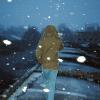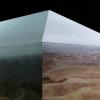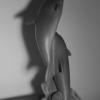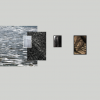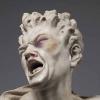These are the works/portfolios that were presented by the Master students in 2016.
Yedihael CANAT, Septante-Cinq
04/05/2016Série de photographies prises ces cinq dernières années qui tentent d'explorer l'intime au travers d'un groupe d'amis.
Fabien Silvestre Suzor, ESA Le Septante-Cinq
04/05/2016En 2012 je décide de vivre une année à Budapest. Un voyage nous laisse toujours des images en tête, certaines nous accompagnent plus longtemps que d’autres. Ces souvenirs s’altèrent, au fur en mesure ils se transforment en rêves, miroirs de ces images passés.
Je suis retourné à Budapest à la recherche de ces songes.
Marion Tylec, La Cambre
04/10/2016"Why do movies take so long to make ?" is an ongoing project focusing on the process of creating, with a cinematographic background. This background maybe is telling a story, like a movie would do, but it remains unclear to the viewer. In fact, the need for the viewer to connect the dots and create a narration which makes sense is the true subject.
Athanasios Gatos, ENSAV La Cambre
04/06/2016There is a little Cave, brings together works produced during the last year between belgium and greece. The beggining source of inspiration and reference was a 60's hollywood film called 'Boy on a Dolphin'. A romantic and surreal story, on the background of a pittoresce small greek island, that's about a myth of a gold statue of a boy riding on a dolphin. Athanasios Gatos in this project approches his work like it was archive photos, as an existing material available to reconsider and deconstruct in order to recreate a new environment. He uses mainly photography, as well video installation, he prints and he rephotographs,he scans,he reprints,in order to create new images-icons, using the same time objects he finds during his visual research. The main idea wondering in this work is the status of the 'exotic' image as the desire hyper-object through media. The insular world as a mystical land promoted today through advertising as a place of leisure and relaxation, advertised fantasies detached from the mainland, existing in walls of touristing agencies and posters pertaining to a better future.
Han CHEN, ENSAV La Cambre
04/12/2016Chestnut flower / sperm / bleach
Everything for me has a sacred character that fascinates me as much as its sensual surface. Chestnut flower, sperm and bleach have the same smell that's why I sought to highlight the similarity of different things. Like a fetish, I try to find a link between the sensual power of things and their functions.
Fleur de marronnier / sperme / eau de javel
Chaque chose a pour moi un caractère sacré qui me fascine tout autant que sa surface sensuelle. Fleur de marronnier, sperme et eau de javel ont la même odeur c’est pourquoi j’ai cherché à mettre en évidence la similarité des choses différentes. Tel un féticheur, j’essaie de trouver un lien entre le pouvoir sensuel des choses et leur fonctions.
Justyna Wierzchowiecka, ENSAV La Cambre
04/06/2016"What is the specific gravity of the object, and did it move or was it still? Did it float or fly like a fish or bird? Is it massive like a boulder or a column? Was it worn like a sword, a cloak or a brooch, or held like a crosier? Did it move swiftly like a deer or a locomotive ? Was it held and caressed by hands like a violin, a book or a scroll painting? Did it sit like a chair or lie like a rug? And how many of these original qualities can be respected in the static framework of exhibition? To be sure all objects in a museum must be fixed, even though some turn by clockwork a scientific principle, but the air of deadly repose hanging over some museum halls breaths from a violation of the object’s physical nature."
„Museum Studies” is a project that doesn’t actually study museums. The question is rather how the general idea of an institution is relevant nowadays, when everyone can be a curator through a simple act of religion, images of images, pieces, historical objects etc. seems to be enough and are easily available. Are the forms of presentation suggested by museums still needed? Is the institutional representation and traditional collections important in post-internet times?
In my photographic work I use images as an excuse and raw material, rather than as a goal itself. I photograph museums and and what is in them, only to reinterpret and emphasize the cliches and the codes typical to them. This is a series, but the visual consistency is not what I am after. This project is rather a scrapbook and a research, than a thesis or a business plan on how to change the contemporary museum institution.
